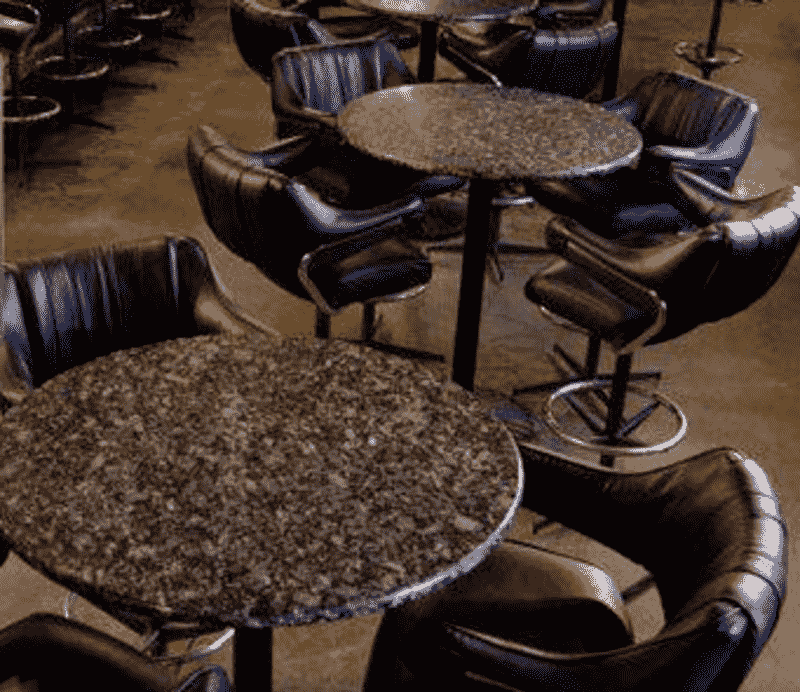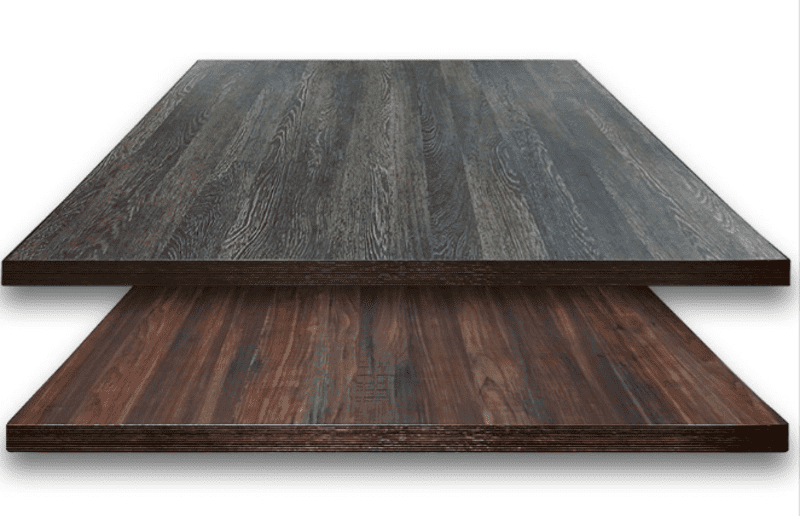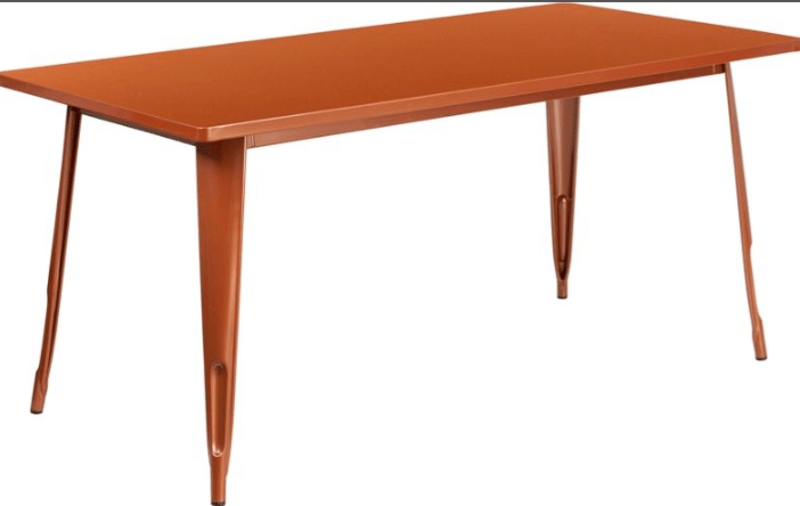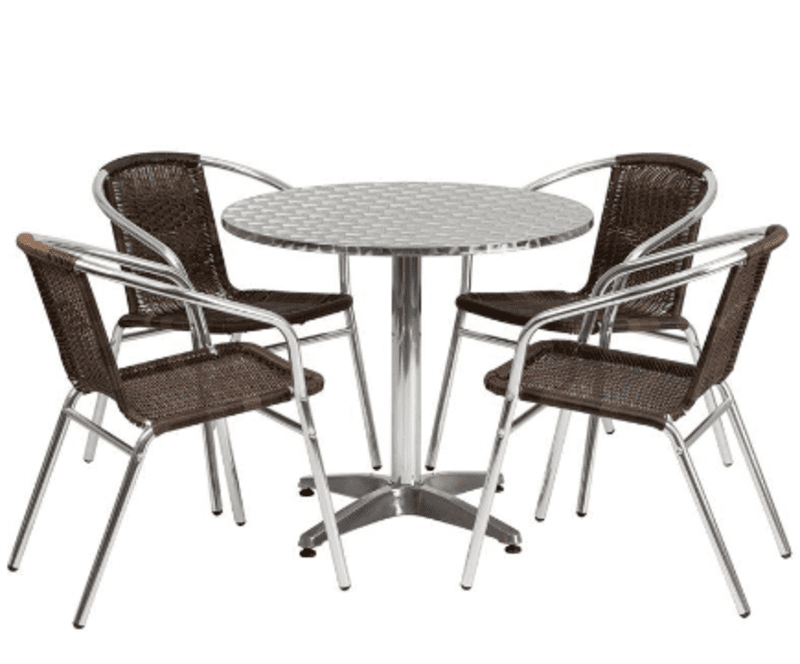Outdoor dining can do wonders for your restaurant business. It not only extends your restaurant’s seating capacity but allows your guests to enjoy dining amidst fresh air as well. However, since there are many elements to master, setting up outdoor dining in your restaurant can get intimidating. Patio tables are the most crucial aspect of any outdoor dining area, and you must select them wisely. You must do some research to select the perfect outdoor table sizes to optimize your patio space.
Finding the Correct Patio Table Size
Since there are endless options in the shape, size, and material of patio tables, it is never straightforward to find the perfect outdoor table dimensions, especially if you do not know your requirements. Before you go out shopping for your restaurant patio furniture, here are a few questions to ask yourself:
1. How many guests do you want to sit comfortably on your patio table?
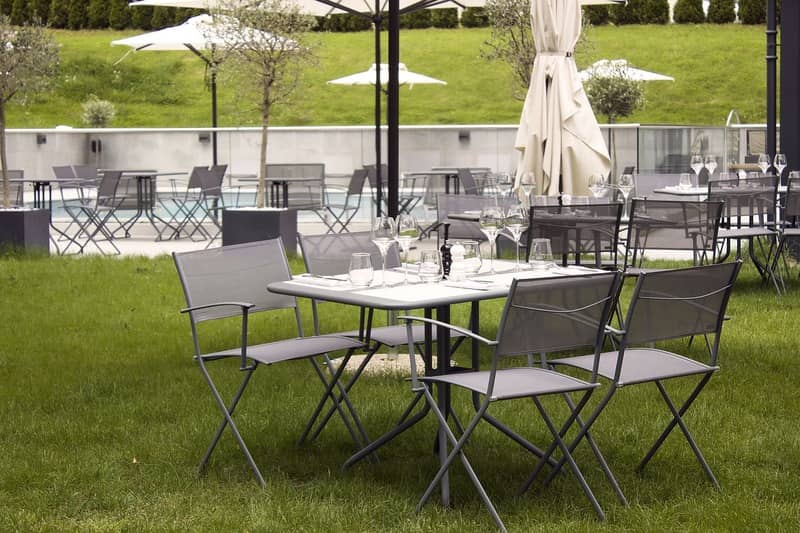
Naturally, outdoor tables’ sizes are available according to the number of persons they can accommodate. As a general rule of thumb, you will need around 300 square inches per person. Most commercial restaurant tables are available in seating capacities of 2, 4, 6, 8, or 10 persons.
2. What is the size of your patio?
Outdoor dining is popular for its relaxed, laidback atmosphere. Unlike cramped indoor dining in restaurants, the patio is airier and more spacious. As an industry-standard, you must leave a gap of about 25-30 inches on either side of the tables to allow your guests to sit down and get up comfortably. Further, you need a working space of another 25-30 inches to allow the movement of your staff and guests.
3. How is your patio surface?
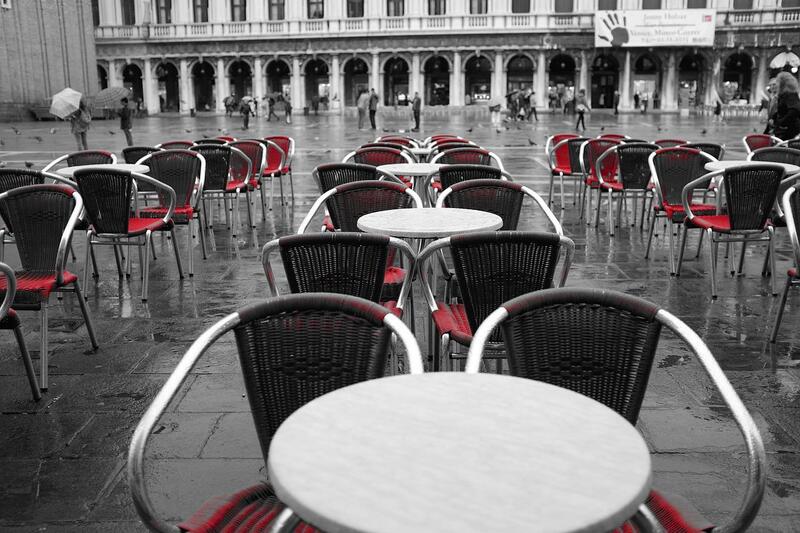
The type of surface of your restaurant patio affects its load-bearing capacity and thereby restricts the size of the table. Some of the most common surfaces in the commercial patio are flagstone, concrete, wooden, pavers, etc. Similarly, you have to check whether the surface finish is smooth or rough.
4. What is the shape of your Patio?
Most restaurant patios are rectangular, square, or free-forming in shape. Ideally, the shape of your dining table should match your patio’s shape. For free-form or irregular spaces, you can use a combination of circular, oval, or rectangular tables to maximize your seating capacity.
Which Material Should You Choose for Your Patio Dining Table?
Commercial dining tables are available in several materials, and each one has its own pros and cons. So, which is the best material for your patio table? Well, it is not a simple answer. It depends on your requirements, preferences, and the atmosphere you wish to create. It also depends on your budget, the type of tables you use indoors, weather conditions, etc. Some of the most popular materials for outdoor restaurant tables include:
- Granite:

Granite, being one of the toughest materials, is an excellent choice for outdoor tables in restaurants. Additionally, it offers sufficient resistance to heat, scratches, or chips. Granite is inherently hardened magma and has a distinctive pattern that results in a stunning, unique look. Although it is more expensive than its counterparts, versatile, strong granite provides great returns on your investment. - Metals: Metals have been one of the oldest materials used for commercial furniture. For example, wrought iron is famous for its vintage, premium look and can last for decades if maintained properly. Similarly, stainless steel offers sufficient resistance to rusting and corrosion and is an excellent choice for outdoor use. If you are tight on your budget, aluminum is a lightweight yet durable material which is easy to clean and maintain.
- Wood:

The rustic, old-world charm of evergreen, textured wood is unbeatable. Although many wooden tables are seldom suitable for outdoor use, you can go for faux teak, which uses a protective sealant. These protective layers make them repel moisture, are easy to clean, and perform better in extreme outdoor conditions like heat, rain, and wind. - Resin/Plastic: Lightweight, inexpensive plastic restaurant tables offer sufficient protection against corrosion and fading. They have become one of the most sought-after materials thanks to their minimalistic design and availability in vibrant colors in eye-catching shapes.
What shape should your patio table be?
When it comes to commercial patio tables, you can choose from these popular shapes:
- Square Patio Tables: As your guests sit equidistant from each other, a square patio table offers intimacy and encourages conversation. Generally, square tables are preferred for 2 to 4 persons (30 inches), but you can get them as big as 64 inches to accommodate 12 persons.
- Rectangular Patio Tables:

For any commercial setup, rectangular tables offer flexibility for large groups. They should be worked into the layout of your patio at the onset if you are purchasing extra long community rectangular tables. Rectangular tables come are available as small as 30 inches in length up to 102 inches. - Oval Patio Tables: Although they are similar to the rectangular tables in footprint, oval tables appear to be space-efficient. Since they do not have corners, it is easy to add chairs to seat larger groups. Typically, oval patio tables are available in the range of 60 inches to 84 inches.
- Round Patio Tables:

Perfect for smaller spaces, round patio tables have an informal yet social aura around them. Most commercial round tables are available in diameters of 24 inches to 60 inches. Round tables make it easy to slide in an extra chair around the table for unexpected guests.
What restaurant table base do you need?
Just like table tops, bases for restaurant patio tables come in different sizes as well.
- Round and oval tables usually feature a pedestal base that provides spacious leg-room underneath the tables. Also, such a design allows adding another chair to seat your guests when required.
- Square and rectangular tables generally have a cross-beam support through legs at each corner known as a T-base. X-bases are also quite often used with smaller square tables. Sometimes larger rectangular tables come with a double pedestal design, symmetrically placed towards the end of the table.
How to Select Your Chair Material & Features?
Aluminum patio chairs are lightweight, waterproof, and are an excellent choice for patios, especially if you require flexibility in shifting them. Alternately, you can consider weave chairs that resemble wicker, clear molded polycarbonate for a contemporary design, or cast aluminum for an industrial or vintage look. Opting for cushions, either full chair cushions or seat cushions, or upholstered seats are a great way of showing that you care for your guests’ comfort.
Also, patio chairs come with several options to match your budget or requirement. For example, if you are low on storage space, you can consider stackable chairs. Similarly, a wide variety of restaurant chairs are available with or without arms to match your patio design.
How Much Space Do You Need to Place Your Patio Dining Furniture?
Traditionally, most restaurant chairs have a depth of 18 to 25 inches. Additionally, you will need some space (usually around 4 to 8 inches) to move the chair away while getting in and out. Therefore, you will require around 30 inches of spacing from the table’s edge on each side. For example, if you have a 48-inch round or square table to seat 4 guests, you will need at least 108 inches (30” [Chair on one side] + 48“[Table Width/Diameter] + 30” [Chair on the opposite side]) per table. Further, leave around 30 inches between two tables for easy movement of your staff/ other guests.
That’s all! Go pick your outdoor furniture
Now that you have covered everything, time to shop for your outdoor restaurant furniture. Get in touch with a wholesale manufacturer of commercial furniture and discuss your requirements. Moreover, you can save on the retailer’s commission by dealing with the manufacturer directly. Also, you can get bulk discounts by ordering all your furniture at once. If your patio is spacious, you can consider accent tables or side tables to fill the space and add to the décor.
Finding the perfect patio table dimensions requires you to take a stock of your requirements and available space. With the right patio table size, you not only optimize your seating capacity but also create an inviting ambiance. This comprehensive patio table size guide highlights all the aspects you need to consider while planning your restaurant patio. Hopefully, these points help you create a stunning patio design that attracts more customers and stands out from the competition.
FAQs
Q.1 What size do patio tables come in?
Rectangular: 30 inches to 102 inches
Square: 30 inches to 64 inches
Round: 24 inches to 60 inches
Oval: 60 inches to 84 inches
Q.2 What is a 6-seater patio table size?
Round Table: 60” (Diameter)
Rectangular: 72”(Length) X 42” (Width)


